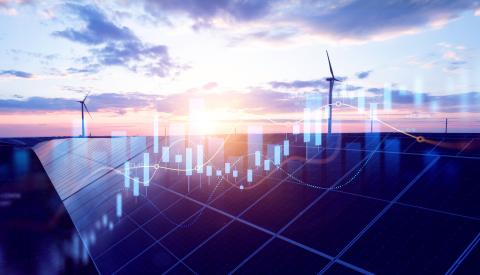European Economic
and Social Committee
Electricity market: EESC proposes E-Facility to regulate where necessary and privatise where possible
In its opinion issued in January, the European Economic and Social Committee (EESC) discusses the future of the electricity market and advocates a combined model of state measures and market mechanisms: government regulation where necessary and private entrepreneurship where possible.
The electricity market has to be reformed in such a way that it does more than just meet the 2050 climate neutrality targets. It is vital to ensure security of supply, stable and affordable prices and the right to energy in order to protect vulnerable groups.
This – in a nutshell – is the content of the opinion on The future of the supply and pricing of electricity in the EU by Jan Dirx and Thomas Kattnig, adopted at the EESC's January plenary session.
More specifically, the Committee advocates a model of government regulation where necessary and private entrepreneurship where possible and recommends an E-facility. This could take the form of a company set up by the government that acts as a market maker in the electricity market and so achieve the objectives of climate neutrality, security of supply and stable and affordable prices.
Reforming the electricity market
The opinion builds on the EESC’s previous work on electricity market reform and cross-border infrastructure planning and further examines proposals for new market organisation. The pre‑requisites for this new organisation are supply and demand, more private generators (such as prosumers and cooperatives) and more large storage capacities, and attractive local and regional flexible markets.
According to the Committee, the change needed in the electricity market should be carried out in three stages:
Phase 1 – from now to 2030
The E-facility will grow its portfolio with a mix of (non-CO2) power generation. During this period, power trading will take place on a day-ahead trading basis but the influence of the E-facility on the market will grow.
Phase 2 – from 2030 to 2040
The E-facility will achieve its market maker position and control an appropriate part of the supply side of the market through supply contracts. The role of day-ahead trading will adjust during this period accordingly.
Phase 3 – from 2040 to 2050
The E-facility will optimise the supply side of electricity to ensure, as from 2050, sustainable long-term supply of electricity with net-zero greenhouse gas emissions at stable and predictable prices.
Keeping energy affordable
In addition, it is important to consider other key options to balance supply and demand such as energy sharing and peer-to-peer trading. These have the advantage of inducing energy communities such as cooperatives and individual prosumers to play an active role in the energy transition.
Against this backdrop, the EESC reiterates its frequently‑shared message that small-scale electricity generation must be encouraged to keep electricity prices affordable for consumers and to increase grid flexibility options.
Moreover, the Committee believes that with the expected rise in energy prices and transmission and distribution tariffs, the cost of electricity in the run-up to 2030 and beyond will require governments to revisit their policy for taxing the supply of electricity to consumers. If taxation is not reduced to offset the increase in prices, electricity could very well become unaffordable for groups of Europeans and make EU companies less competitive on the international market.
